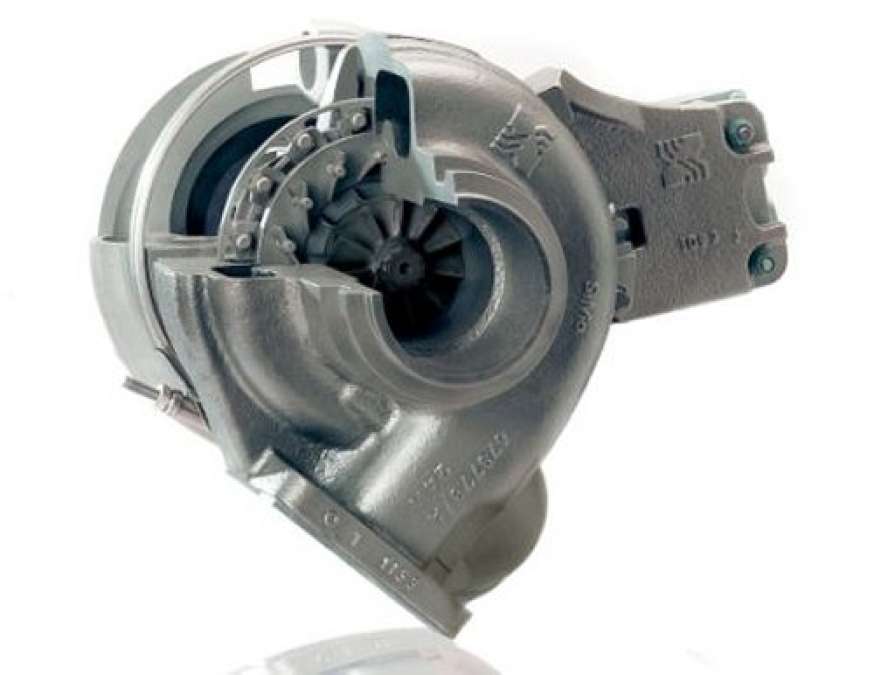The new turbocharger is meant for maximum power diesel engines on premium vehicles. It will appear exclusively on the BMW M Performance with its six-cylinder in-line diesel engine. That engine appears in the M550d Drive Sedan and Touring, the X5 M50d Touring, and the X6 M50d. The engine's maximum output is 381 HP and 546 lb-ft of torque using the new 3-stage turbo on its 3.0-liter block.
The 3-stage turbo improves power and performance while also aiding fuel economy and emissions control. The turbocharging system is two small BV45 high-pressure variable turbine geometry turbochargers integrated with a larger B2 low-pressure, water-cooled turbocharger. Adding a second high-pressure turbo to the 2-stage system BorgWarner already markets means the engine has a higher capability for generating higher boost pressures in high-demand situations.
The three turbos activate successively at different engine speeds (RPM). At just above idle, the first high-pressure turbo begins operating, then as revs increase, the low-pressure turbo activates. Finally, the third turbo, the second high-pressure charger, adds to the mix and the three work in harmony to both increase engine output and efficiency while recurculating exhaust gasses to improve emissions.
Various safety and performances measures are in place to ensure optimum operation. Backpressure is regulated both mechanically and electronically and pneumatic flaps regulate the fresh air supply. Incoming air temperature regulation optimizes the compressed air temperature in all three turbos so it enters the engine at optimum temperature to add efficiency to the engine's output.
Compared to the same engine with BorgWarner's 2-stage turbocharging system, the 3-stage system increases power output by nearly 25% and improves fuel economy by 8% while meeting Euro 6 emissions standards. It boosts power output to 93.6kW per liter of displacement versus the 2-stage's boost of 75.2kW/liter.






Comments
I'm wondering why they're not
Permalink
I'm wondering why they're not pushing this for gasoline also. Am I missing something?
Gasoline is different because
Permalink
In reply to I'm wondering why they're not by Nicolas Zart
Gasoline is different because of the pressures and mixtures involved. Gasoline engines also don't usually have reburn, which is a big part of today's diesel operations for low emissions. So the same boosts this gives a diesel engine could be had with a variably-timed single or dual turbo on a gasoline engine. That's basically what is being done in a Ford EcoBoost or the GM 2.0L in the Caddy ATS and the Mazda SKYACTIV engines.